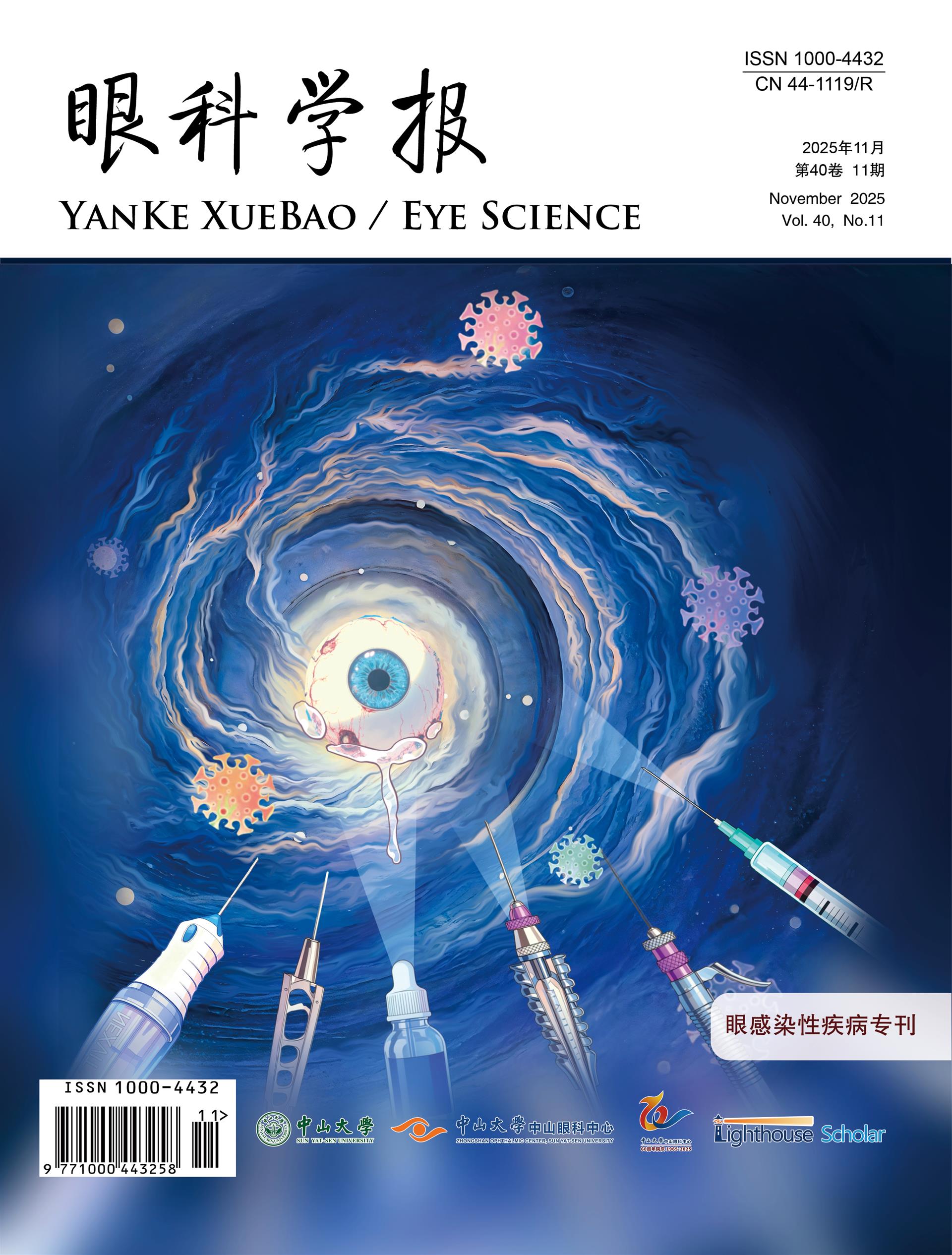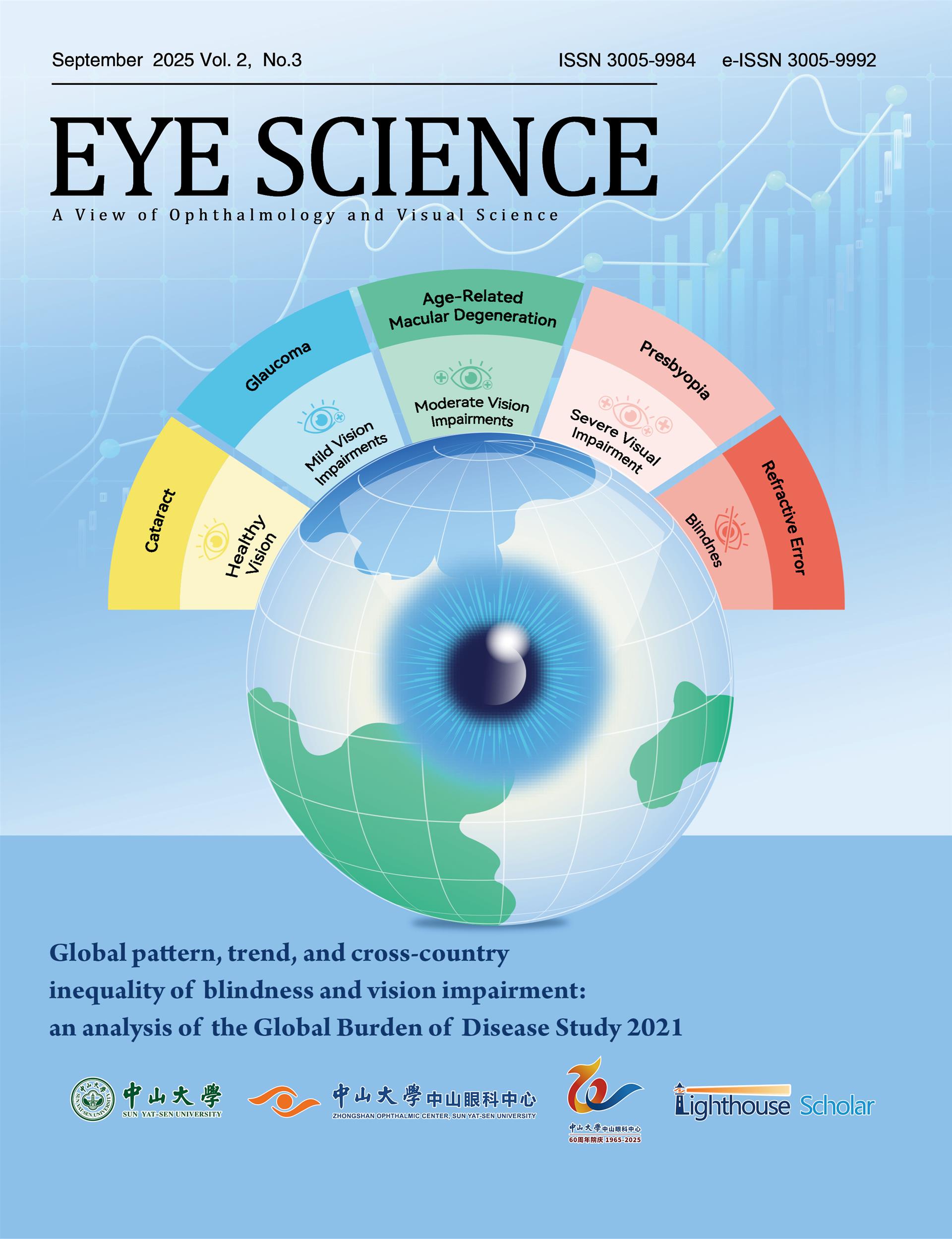1、DiMasi JA, Grabowski HG, Hansen RW. Innovation
in the pharmaceutical industry: new estimates of R&D
costs. J Health Econ., 2016, 47: 20-33. DOI: 10.1016/
j.jhealeco.2016.01.012.DiMasi JA, Grabowski HG, Hansen RW. Innovation
in the pharmaceutical industry: new estimates of R&D
costs. J Health Econ., 2016, 47: 20-33. DOI: 10.1016/
j.jhealeco.2016.01.012.
2、Paul SM, Mytelka DS, Dunwiddie CT, et al. How to
improve R&D productivity: the pharmaceutical industry’s
grand challenge. Nat Rev Drug Discov. 2010, 9(3): 203-
214. DOI: 10.1038/nrd3078.Paul SM, Mytelka DS, Dunwiddie CT, et al. How to
improve R&D productivity: the pharmaceutical industry’s
grand challenge. Nat Rev Drug Discov. 2010, 9(3): 203-
214. DOI: 10.1038/nrd3078.
3、Stark R, Grzelak M, Hadfield J. RNA sequencing: the
teenage years. Nat Rev Genet. 2019, 20(11): 631-656.
DOI: 10.1038/s41576-019-0150-2.Stark R, Grzelak M, Hadfield J. RNA sequencing: the
teenage years. Nat Rev Genet. 2019, 20(11): 631-656.
DOI: 10.1038/s41576-019-0150-2.
4、Tang F, Barbacioru C, Wang Y, et al. mRNA-Seq whole�transcriptome analysis of a single cell. Nat Methods.2009,
6(5): 377-382. DOI: 10.1038/nmeth.1315.Tang F, Barbacioru C, Wang Y, et al. mRNA-Seq whole�transcriptome analysis of a single cell. Nat Methods.2009,
6(5): 377-382. DOI: 10.1038/nmeth.1315.
5、Underwood, P.A. and P.A. Bean, Hazards of the limiting�dilution method of cloning hybridomas. J Immunol Methods. 1988. 107(1): p. 119-28.Underwood, P.A. and P.A. Bean, Hazards of the limiting�dilution method of cloning hybridomas. J Immunol Methods. 1988. 107(1): p. 119-28.
6、Malter HE. Micromanipulation in assisted reproductive
technology. Reprod Biomed Online. 2016, 32(4): 339-347.
DOI: 10.1016/j.rbmo.2016.01.012.Malter HE. Micromanipulation in assisted reproductive
technology. Reprod Biomed Online. 2016, 32(4): 339-347.
DOI: 10.1016/j.rbmo.2016.01.012.
7、Espina V, Heiby M, Pierobon M, et al. Laser capture
microdissection technology. Expert Rev Mol Diagn. 2007,
7(5): 647-657. DOI: 10.1586/14737159.7.5.647.Espina V, Heiby M, Pierobon M, et al. Laser capture
microdissection technology. Expert Rev Mol Diagn. 2007,
7(5): 647-657. DOI: 10.1586/14737159.7.5.647.
8、Valet G. Past and present concepts in flow cytometry:
a European perspective. J Biol Regul Homeost Agents.
2003, 17(3): 213-222.Valet G. Past and present concepts in flow cytometry:
a European perspective. J Biol Regul Homeost Agents.
2003, 17(3): 213-222.
9、Reece A, Xia B, Jiang Z, et al. Microfluidic techniques for
high throughput single cell analysis. Curr Opin Biotechnol.
2016, 40: 90-96. DOI: 10.1016/j.copbio.2016.02.015.Reece A, Xia B, Jiang Z, et al. Microfluidic techniques for
high throughput single cell analysis. Curr Opin Biotechnol.
2016, 40: 90-96. DOI: 10.1016/j.copbio.2016.02.015.
10、 Macosko EZ, Basu A, Satija R, et al. Highly parallel
genome-wide expression profiling of individual cells using
nanoliter droplets. Cell. 2015, 161(5): 1202-1214. DOI:
10.1016/j.cell.2015.05.002. Macosko EZ, Basu A, Satija R, et al. Highly parallel
genome-wide expression profiling of individual cells using
nanoliter droplets. Cell. 2015, 161(5): 1202-1214. DOI:
10.1016/j.cell.2015.05.002.
11、Klein A, Mazutis L, Akartuna I, et al. Droplet barcoding
for single-cell transcriptomics applied to embryonic
stem cells. Cell.2015, 161(5): 1187-1201. DOI: 10.1016/
j.cell.2015.04.044.Klein A, Mazutis L, Akartuna I, et al. Droplet barcoding
for single-cell transcriptomics applied to embryonic
stem cells. Cell.2015, 161(5): 1187-1201. DOI: 10.1016/
j.cell.2015.04.044.
12、 Zheng GX, Terry JM, Belgrader P, et al. Massively
parallel digital transcriptional profiling of single cells. Nat
Commun. 2017, 8: 14049. DOI: 10.1038/ncomms14049. Zheng GX, Terry JM, Belgrader P, et al. Massively
parallel digital transcriptional profiling of single cells. Nat
Commun. 2017, 8: 14049. DOI: 10.1038/ncomms14049.
13、Hashimshony T, Wagner F, Sher N, et al. CEL-Seq:
single-cell RNA-Seq by multiplexed linear amplification.
Cell Rep. 2012, 2(3): 666-673. DOI: 10.1016/
j.celrep.2012.08.003.Hashimshony T, Wagner F, Sher N, et al. CEL-Seq:
single-cell RNA-Seq by multiplexed linear amplification.
Cell Rep. 2012, 2(3): 666-673. DOI: 10.1016/
j.celrep.2012.08.003.
14、 Goetz JJ, Trimarchi JM. Transcriptome sequencing of
single cells with Smart-Seq. Nat Biotechnol. 2012, 30(8):
763-765. DOI: 10.1038/nbt.2325. Goetz JJ, Trimarchi JM. Transcriptome sequencing of
single cells with Smart-Seq. Nat Biotechnol. 2012, 30(8):
763-765. DOI: 10.1038/nbt.2325.
15、 Xin Y, Kim J, Ni M, et al. Use of the Fluidigm C1 platform
for RNA sequencing of single mouse pancreatic islet cells.
Proc Natl Acad Sci U S A. 2016, 113(12): 3293-3298.
DOI: 10.1073/pnas.1602306113. Xin Y, Kim J, Ni M, et al. Use of the Fluidigm C1 platform
for RNA sequencing of single mouse pancreatic islet cells.
Proc Natl Acad Sci U S A. 2016, 113(12): 3293-3298.
DOI: 10.1073/pnas.1602306113.
16、Picelli%20S%2C%20Faridani%20OR%2C%20Bj%C3%B6rklund%20%C3%85K%2C%20et%20al.%20Full-length%20RNA-seq%20from%20single%20cells%20using%20Smart-seq2.%20Nat%20Protoc.%20%0A2014%2C%209(1)%3A%20171-181.%20DOI%3A%2010.1038%2Fnprot.2014.006.Picelli%20S%2C%20Faridani%20OR%2C%20Bj%C3%B6rklund%20%C3%85K%2C%20et%20al.%20Full-length%20RNA-seq%20from%20single%20cells%20using%20Smart-seq2.%20Nat%20Protoc.%20%0A2014%2C%209(1)%3A%20171-181.%20DOI%3A%2010.1038%2Fnprot.2014.006.
17、Hashimshony T, Senderovich N, Avital G, et al. CEL�Seq2: sensitive highly-multiplexed single-cell RNA-Seq.
Genome Biol. 2016, 17: 77. DOI: 10.1186/s13059-016-
0938-8.Hashimshony T, Senderovich N, Avital G, et al. CEL�Seq2: sensitive highly-multiplexed single-cell RNA-Seq.
Genome Biol. 2016, 17: 77. DOI: 10.1186/s13059-016-
0938-8.
18、 Jaitin DA, Kenigsberg E, Keren-Shaul H, et al.
Massively parallel single-cell RNA-seq for marker-free
decomposition of tissues into cell types. Science. 2014,
343(6172): 776-779. DOI: 10.1126/science.1247651. Jaitin DA, Kenigsberg E, Keren-Shaul H, et al.
Massively parallel single-cell RNA-seq for marker-free
decomposition of tissues into cell types. Science. 2014,
343(6172): 776-779. DOI: 10.1126/science.1247651.
19、 Soumillon M, Cacchiarelli D, Semrau S, et al.
Characterization of directed differentiation by high�throughput single-cell RNA-Seq. BioRxiv.2014, DOI:
10.1101/003236. DOI: 10.1101/003236. Soumillon M, Cacchiarelli D, Semrau S, et al.
Characterization of directed differentiation by high�throughput single-cell RNA-Seq. BioRxiv.2014, DOI:
10.1101/003236. DOI: 10.1101/003236.
20、Mereu E, Lafzi A, Moutinho C, et al. Benchmarking
single-cell RNA-sequencing protocols for cell atlas
projects. Nat Biotechnol. 2020, 38(6): 747-755. DOI:
10.1038/s41587-020-0469-4.Mereu E, Lafzi A, Moutinho C, et al. Benchmarking
single-cell RNA-sequencing protocols for cell atlas
projects. Nat Biotechnol. 2020, 38(6): 747-755. DOI:
10.1038/s41587-020-0469-4.
21、Mereu E, Lafzi A, Moutinho C, et al. Benchmarking
single-cell RNA-sequencing protocols for cell atlas
projects. Nat Biotechnol. 2020, 38(6): 747-755. DOI:
10.1038/s41587-020-0469-4.Mereu E, Lafzi A, Moutinho C, et al. Benchmarking
single-cell RNA-sequencing protocols for cell atlas
projects. Nat Biotechnol. 2020, 38(6): 747-755. DOI:
10.1038/s41587-020-0469-4.
22、Picelli%20S%2C%20Bj%C3%B6rklund%20AK%2C%20Reinius%20B%2C%20et%20al.%20Tn5%20transposase%20%0Aand%20tagmentation%20procedures%20for%20massively%20scaled%20%0Asequencing%20projects.%20Genome%20Res.%202014%2C%2024(12)%3A%202033-%0A2040.%20DOI%3A%2010.1101%2Fgr.177881.114.Picelli%20S%2C%20Bj%C3%B6rklund%20AK%2C%20Reinius%20B%2C%20et%20al.%20Tn5%20transposase%20%0Aand%20tagmentation%20procedures%20for%20massively%20scaled%20%0Asequencing%20projects.%20Genome%20Res.%202014%2C%2024(12)%3A%202033-%0A2040.%20DOI%3A%2010.1101%2Fgr.177881.114.
23、Baysoy A, Bai Z, Satija R, et al. The technological
landscape and applications of single-cell multi-omics. Nat
Rev Mol Cell Biol. 2023, 24(10): 695-713. DOI: 10.1038/
s41580-023-00615-w.Baysoy A, Bai Z, Satija R, et al. The technological
landscape and applications of single-cell multi-omics. Nat
Rev Mol Cell Biol. 2023, 24(10): 695-713. DOI: 10.1038/
s41580-023-00615-w.
24、 Han L, Zi X, Garmire LX, et al. Co-detection and
sequencing of genes and transcripts from the same single
cells facilitated by a microfluidics platform. Sci Rep. 2014,
4: 6485. DOI: 10.1038/srep06485. Han L, Zi X, Garmire LX, et al. Co-detection and
sequencing of genes and transcripts from the same single
cells facilitated by a microfluidics platform. Sci Rep. 2014,
4: 6485. DOI: 10.1038/srep06485.
25、MacAulay IC, Haerty W, Kumar P, et al. G&T-seq: parallel
sequencing of single-cell genomes and transcriptomes.Nat Methods. 2015, 12(6): 519-522. DOI: 10.1038/nmeth.
3370.MacAulay IC, Haerty W, Kumar P, et al. G&T-seq: parallel
sequencing of single-cell genomes and transcriptomes.Nat Methods. 2015, 12(6): 519-522. DOI: 10.1038/nmeth.
3370.
26、Dey SS, Kester L, Spanjaard B, et al. Integrated genome
and transcriptome sequencing of the same cell. Nat
Biotechnol. 2015, 33(3): 285-289. DOI: 10.1038/nbt.3129.Dey SS, Kester L, Spanjaard B, et al. Integrated genome
and transcriptome sequencing of the same cell. Nat
Biotechnol. 2015, 33(3): 285-289. DOI: 10.1038/nbt.3129.
27、Han KY, Kim KT, Joung JG, et al. SIDR: simultaneous
isolation and parallel sequencing of genomic DNA and
total RNA from single cells. Genome Res. 2018, 28(1): 75-
87. DOI: 10.1101/gr.223263.117.Han KY, Kim KT, Joung JG, et al. SIDR: simultaneous
isolation and parallel sequencing of genomic DNA and
total RNA from single cells. Genome Res. 2018, 28(1): 75-
87. DOI: 10.1101/gr.223263.117.
28、 Rodriguez-Meira A, Buck G, Clark SA, et al. Unravelling
intratumoral heterogeneity through high-sensitivity single�cell mutational analysis and parallel RNA sequencing. Mol
Cell. 2019, 73(6): 1292-1305.e8. DOI: 10.1016/j.molcel.
2019.01.009. Rodriguez-Meira A, Buck G, Clark SA, et al. Unravelling
intratumoral heterogeneity through high-sensitivity single�cell mutational analysis and parallel RNA sequencing. Mol
Cell. 2019, 73(6): 1292-1305.e8. DOI: 10.1016/j.molcel.
2019.01.009.
29、 Moore LD, Le T, Fan G. DNA methylation and its basic
function. Neuropsychopharmacology. 2013, 38(1): 23-38.
DOI: 10.1038/npp.2012.112. Moore LD, Le T, Fan G. DNA methylation and its basic
function. Neuropsychopharmacology. 2013, 38(1): 23-38.
DOI: 10.1038/npp.2012.112.
30、 Smallwood SA, Lee HJ, Angermueller C, et al. Single-cell
genome-wide bisulfite sequencing for assessing epigenetic
heterogeneity. Nat Methods. 2014, 11(8): 817-820. DOI:
10.1038/nmeth.3035. Smallwood SA, Lee HJ, Angermueller C, et al. Single-cell
genome-wide bisulfite sequencing for assessing epigenetic
heterogeneity. Nat Methods. 2014, 11(8): 817-820. DOI:
10.1038/nmeth.3035.
31、Angermueller C, Clark SJ, Lee HJ, et al. Parallel single�cell sequencing links transcriptional and epigenetic
heterogeneity. Nat Methods. 2016, 13(3): 229-232. DOI:
10.1038/nmeth.3728.Angermueller C, Clark SJ, Lee HJ, et al. Parallel single�cell sequencing links transcriptional and epigenetic
heterogeneity. Nat Methods. 2016, 13(3): 229-232. DOI:
10.1038/nmeth.3728.
32、Hu Y, An Q, Guo Y, et al. Simultaneous profiling of
mRNA transcriptome and DNA methylome from a single
cell. Methods Mol Biol.2019, 1979: 363-377. DOI:
10.1007/978-1-4939-9240-9_21.Hu Y, An Q, Guo Y, et al. Simultaneous profiling of
mRNA transcriptome and DNA methylome from a single
cell. Methods Mol Biol.2019, 1979: 363-377. DOI:
10.1007/978-1-4939-9240-9_21.
33、 Hou Y, Guo H, Cao C, et al. Single-cell triple omics
sequencing reveals genetic, epigenetic, and transcriptomic
heterogeneity in hepatocellular carcinomas. Cell Res.
2016, 26(3): 304-319. DOI: 10.1038/cr.2016.23. Hou Y, Guo H, Cao C, et al. Single-cell triple omics
sequencing reveals genetic, epigenetic, and transcriptomic
heterogeneity in hepatocellular carcinomas. Cell Res.
2016, 26(3): 304-319. DOI: 10.1038/cr.2016.23.
34、 Buenrostro JD, Giresi PG, Zaba LC, et al. Transposition
of native chromatin for fast and sensitive epigenomic
profiling of open chromatin, DNA-binding proteins and nucleosome position. Nat Methods. 2013, 10(12): 1213-
1218. DOI: 10.1038/nmeth.2688.Buenrostro JD, Giresi PG, Zaba LC, et al. Transposition
of native chromatin for fast and sensitive epigenomic
profiling of open chromatin, DNA-binding proteins and nucleosome position. Nat Methods. 2013, 10(12): 1213-
1218. DOI: 10.1038/nmeth.2688.
35、Pott S. Simultaneous measurement of chromatin
accessibility, DNA methylation, and nucleosome phasing
in single cells. Elife. 2017, 6: e23203. DOI: 10.7554/
eLife.23203.Pott S. Simultaneous measurement of chromatin
accessibility, DNA methylation, and nucleosome phasing
in single cells. Elife. 2017, 6: e23203. DOI: 10.7554/
eLife.23203.
36、Clark SJ, Argelaguet R, Kapourani CA, et al. scNMT-seq
enables joint profiling of chromatin accessibility DNA
methylation and transcription in single cells. Nat Commun.
2018, 9(1): 781. DOI: 10.1038/s41467-018-03149-4.Clark SJ, Argelaguet R, Kapourani CA, et al. scNMT-seq
enables joint profiling of chromatin accessibility DNA
methylation and transcription in single cells. Nat Commun.
2018, 9(1): 781. DOI: 10.1038/s41467-018-03149-4.
37、Wang Y, Yuan P, Yan Z, et al. Single-cell multiomics
sequencing reveals the functional regulatory landscape
of early embryos. Nat Commun. 2021, 12(1): 1247. DOI:
10.1038/s41467-021-21409-8.Wang Y, Yuan P, Yan Z, et al. Single-cell multiomics
sequencing reveals the functional regulatory landscape
of early embryos. Nat Commun. 2021, 12(1): 1247. DOI:
10.1038/s41467-021-21409-8.
38、Li L, Guo F, Gao Y, et al. Single-cell multi-omics
sequencing of human early embryos. Nat Cell Biol. 2018,
20(7): 847-858. DOI: 10.1038/s41556-018-0123-2.Li L, Guo F, Gao Y, et al. Single-cell multi-omics
sequencing of human early embryos. Nat Cell Biol. 2018,
20(7): 847-858. DOI: 10.1038/s41556-018-0123-2.
39、Grosselin K, Durand A, Marsolier J, et al. High-throughput
single-cell ChIP-seq identifies heterogeneity of chromatin
states in breast cancer. Nat Genet. 2019, 51(6): 1060-1066.
DOI: 10.1038/s41588-019-0424-9.Grosselin K, Durand A, Marsolier J, et al. High-throughput
single-cell ChIP-seq identifies heterogeneity of chromatin
states in breast cancer. Nat Genet. 2019, 51(6): 1060-1066.
DOI: 10.1038/s41588-019-0424-9.
40、Skene PJ, Henikoff S. An efficient targeted nuclease
strategy for high-resolution mapping of DNA binding sites.
eLife. 2017, 6: e21856. DOI: 10.7554/eLife.21856.Skene PJ, Henikoff S. An efficient targeted nuclease
strategy for high-resolution mapping of DNA binding sites.
eLife. 2017, 6: e21856. DOI: 10.7554/eLife.21856.
41、Kaya-Okur HS, Wu SJ, Codomo CA, et al. CUT&Tag for
efficient epigenomic profiling of small samples and single
cells. Nat Commun. 2019, 10(1): 1930. DOI: 10.1038/
s41467-019-09982-5.Kaya-Okur HS, Wu SJ, Codomo CA, et al. CUT&Tag for
efficient epigenomic profiling of small samples and single
cells. Nat Commun. 2019, 10(1): 1930. DOI: 10.1038/
s41467-019-09982-5.
42、Bartosovic M, Kabbe M, Castelo-Branco G. Single-cell
CUT&Tag profiles histone modifications and transcription
factors in complex tissues. Nat Biotechnol. 2021, 39(7):
825-835. DOI: 10.1038/s41587-021-00869-9.Bartosovic M, Kabbe M, Castelo-Branco G. Single-cell
CUT&Tag profiles histone modifications and transcription
factors in complex tissues. Nat Biotechnol. 2021, 39(7):
825-835. DOI: 10.1038/s41587-021-00869-9.
43、 Zhang B, Srivastava A, Mimitou E, et al. Characterizing
cellular heterogeneity in chromatin state with scCUT&Tag�pro. Nat Biotechnol.2022, 40(8): 1220-1230. DOI:
10.1038/s41587-022-01250-0. Zhang B, Srivastava A, Mimitou E, et al. Characterizing
cellular heterogeneity in chromatin state with scCUT&Tag�pro. Nat Biotechnol.2022, 40(8): 1220-1230. DOI:
10.1038/s41587-022-01250-0.
44、Frei AP, Bava FA, Zunder ER, et al. Highly multiplexed
simultaneous detection of RNAs and proteins in single
cells. Nat Methods. 2016, 13(3): 269-275. DOI: 10.1038/
nmeth.3742.Frei AP, Bava FA, Zunder ER, et al. Highly multiplexed
simultaneous detection of RNAs and proteins in single
cells. Nat Methods. 2016, 13(3): 269-275. DOI: 10.1038/
nmeth.3742.
45、Stoeckius M, Hafemeister C, Stephenson W, et al.
Simultaneous epitope and transcriptome measurement in
single cells. Nat Methods. 2017, 14(9): 865-868. DOI:
10.1038/nmeth.4380.Stoeckius M, Hafemeister C, Stephenson W, et al.
Simultaneous epitope and transcriptome measurement in
single cells. Nat Methods. 2017, 14(9): 865-868. DOI:
10.1038/nmeth.4380.
46、Peterson VM, Zhang KX, Kumar N, et al. Multiplexed
quantification of proteins and transcripts in single cells.
Nat Biotechnol. 2017, 35(10): 936-939. DOI: 10.1038/
nbt.3973.Peterson VM, Zhang KX, Kumar N, et al. Multiplexed
quantification of proteins and transcripts in single cells.
Nat Biotechnol. 2017, 35(10): 936-939. DOI: 10.1038/
nbt.3973.
47、St%C3%A5hl%20PL%2C%20Salm%C3%A9n%20F%2C%20Vickovic%20S%2C%20et%20al.%20Visualization%20and%20%0Aanalysis%20of%20gene%20expression%20in%20tissue%20sections%20by%20spatial%20%0Atranscriptomics.%20Science.%202016%2C%20353(6294)%3A%2078-82.%20DOI%3A%20%0A10.1126%2Fscience.aaf2403.St%C3%A5hl%20PL%2C%20Salm%C3%A9n%20F%2C%20Vickovic%20S%2C%20et%20al.%20Visualization%20and%20%0Aanalysis%20of%20gene%20expression%20in%20tissue%20sections%20by%20spatial%20%0Atranscriptomics.%20Science.%202016%2C%20353(6294)%3A%2078-82.%20DOI%3A%20%0A10.1126%2Fscience.aaf2403.
48、 Liu Y, Yang M, Deng Y, et al. High-spatial-resolution
multi-omics sequencing via deterministic barcoding in
tissue. Cell. 2020, 183(6): 1665-1681.e18. DOI: 10.1016/
j.cell.2020.10.026. Liu Y, Yang M, Deng Y, et al. High-spatial-resolution
multi-omics sequencing via deterministic barcoding in
tissue. Cell. 2020, 183(6): 1665-1681.e18. DOI: 10.1016/
j.cell.2020.10.026.
49、Rodriques SG, Stickels RR, Goeva A, et al. Slide�seq: a scalable technology for measuring genome-wide
expression at high spatial resolution. Science. 2019,
363(6434): 1463-1467. DOI: 10.1126/science.aaw1219.Rodriques SG, Stickels RR, Goeva A, et al. Slide�seq: a scalable technology for measuring genome-wide
expression at high spatial resolution. Science. 2019,
363(6434): 1463-1467. DOI: 10.1126/science.aaw1219.
50、Stickels RR, Murray E, Kumar P, et al. Highly sensitive
spatial transcriptomics at near-cellular resolution with
Slide-seqV2. Nat Biotechnol. 2021, 39(3): 313-319. DOI:
10.1038/s41587-020-0739-1.Stickels RR, Murray E, Kumar P, et al. Highly sensitive
spatial transcriptomics at near-cellular resolution with
Slide-seqV2. Nat Biotechnol. 2021, 39(3): 313-319. DOI:
10.1038/s41587-020-0739-1.
51、Lu Y, Shiau F, Yi W, et al. Single-cell analysis of human
retina identifies evolutionarily conserved and species�specific mechanisms controlling development. Dev Cell.
2020, 53(4): 473-491.e9. DOI: 10.1016/j.devcel. 2020.04.009.Lu Y, Shiau F, Yi W, et al. Single-cell analysis of human
retina identifies evolutionarily conserved and species�specific mechanisms controlling development. Dev Cell.
2020, 53(4): 473-491.e9. DOI: 10.1016/j.devcel. 2020.04.009.
52、Lukowski SW, Lo CY, Sharov AA, et al. A single-cell
transcriptome atlas of the adult human retina. EMBO J.
2019, 38(18): e100811. DOI: 10.15252/embj.2018100811.Lukowski SW, Lo CY, Sharov AA, et al. A single-cell
transcriptome atlas of the adult human retina. EMBO J.
2019, 38(18): e100811. DOI: 10.15252/embj.2018100811.
53、Xiao Y, Mao X, Hu X, et al. Single-cell transcriptomic
profiling of human retinal organoids revealed a role
of IGF1-PHLDA1 axis in photoreceptor precursor
specification. Invest Ophthalmol Vis Sci. 2022, 63(12): 9.
DOI: 10.1167/iovs.63.12.9.Xiao Y, Mao X, Hu X, et al. Single-cell transcriptomic
profiling of human retinal organoids revealed a role
of IGF1-PHLDA1 axis in photoreceptor precursor
specification. Invest Ophthalmol Vis Sci. 2022, 63(12): 9.
DOI: 10.1167/iovs.63.12.9.
54、Hu Y, Wang X, Hu B, et al. Dissecting the transcriptome
landscape of the human fetal neural retina and retinal
pigment epithelium by single-cell RNA-seq analysis. PLoS
Biol. 2019, 17(7): e3000365. DOI: 10.1371/journal.pbio.
3000365.Hu Y, Wang X, Hu B, et al. Dissecting the transcriptome
landscape of the human fetal neural retina and retinal
pigment epithelium by single-cell RNA-seq analysis. PLoS
Biol. 2019, 17(7): e3000365. DOI: 10.1371/journal.pbio.
3000365.
55、Liang Q, Cheng X, Wang J, et al. A multi-omics atlas of
the human retina at single-cell resolution. Cell Genom.
2023, 3(6): 100298. DOI: 10.1016/j.xgen.2023.100298.Liang Q, Cheng X, Wang J, et al. A multi-omics atlas of
the human retina at single-cell resolution. Cell Genom.
2023, 3(6): 100298. DOI: 10.1016/j.xgen.2023.100298.
56、Yi W, Lu Y, Zhong S, et al. A single-cell transcriptome
atlas of the aging human and macaque retina. Natl Sci Rev.
2021, 8(4): nwaa179. DOI: 10.1093/nsr/nwaa179.Yi W, Lu Y, Zhong S, et al. A single-cell transcriptome
atlas of the aging human and macaque retina. Natl Sci Rev.
2021, 8(4): nwaa179. DOI: 10.1093/nsr/nwaa179.
57、Dou S, Wang Q, Qi X, et al. Molecular identity of human
limbal heterogeneity involved in corneal homeostasis and
privilege. Ocul Surf. 2021, 21: 206-220. DOI: 10.1016/
j.jtos.2021.04.010.Dou S, Wang Q, Qi X, et al. Molecular identity of human
limbal heterogeneity involved in corneal homeostasis and
privilege. Ocul Surf. 2021, 21: 206-220. DOI: 10.1016/
j.jtos.2021.04.010.
58、Xiao Y, Hu X, Fan S, et al. Single-cell transcriptome
profiling reveals the suppressive role of retinal neurons in
microglia activation under diabetes mellitus. Front Cell
Dev Biol. 2021, 9: 680947. DOI: 10.3389/fcell.2021.
680947.Xiao Y, Hu X, Fan S, et al. Single-cell transcriptome
profiling reveals the suppressive role of retinal neurons in
microglia activation under diabetes mellitus. Front Cell
Dev Biol. 2021, 9: 680947. DOI: 10.3389/fcell.2021.
680947.
59、Wang Y, Yang X, Li Q, et al. Single-cell RNA sequencing
reveals the Müller subtypes and inner blood-retinal
barrier regulatory network in early diabetic retinopathy.
Front Mol Neurosci. 2022, 15: 1048634. DOI: 10.3389/
fnmol.2022.1048634.Wang Y, Yang X, Li Q, et al. Single-cell RNA sequencing
reveals the Müller subtypes and inner blood-retinal
barrier regulatory network in early diabetic retinopathy.
Front Mol Neurosci. 2022, 15: 1048634. DOI: 10.3389/
fnmol.2022.1048634.
60、Hu Z, Mao X, Chen M, et al. Single-cell transcriptomics
reveals novel role of microglia in fibrovascular membrane of proliferative diabetic retinopathy. Diabetes. 2022, 71(4):
762-773. DOI: 10.2337/db21-0551.Hu Z, Mao X, Chen M, et al. Single-cell transcriptomics
reveals novel role of microglia in fibrovascular membrane
of proliferative diabetic retinopathy. Diabetes. 2022, 71(4):
762-773. DOI: 10.2337/db21-0551.
61、Hu Y, Hu Y, Xiao Y, et al. Genetic landscape and
autoimmunity of monocytes in developing Vogt–
Koyanagi–Harada disease. Proc Natl Acad Sci U S
A. 2020, 117(41): 25712-25721. DOI: 10.1073/pnas.
2002476117.Hu Y, Hu Y, Xiao Y, et al. Genetic landscape and
autoimmunity of monocytes in developing Vogt–
Koyanagi–Harada disease. Proc Natl Acad Sci U S
A. 2020, 117(41): 25712-25721. DOI: 10.1073/pnas.
2002476117.
62、 Heng JS, Hackett SF, Stein-O’Brien GL, et al.
Comprehensive analysis of a mouse model of spontaneous
uveoretinitis using single-cell RNA sequencing. Proc
Natl Acad Sci U S A. 2019, 116(52): 26734-26744. DOI:
10.1073/pnas.1915571116. Heng JS, Hackett SF, Stein-O’Brien GL, et al.
Comprehensive analysis of a mouse model of spontaneous
uveoretinitis using single-cell RNA sequencing. Proc
Natl Acad Sci U S A. 2019, 116(52): 26734-26744. DOI:
10.1073/pnas.1915571116.
63、Dou S, Wang Q, Zhang B, et al. Single-cell atlas of
keratoconus corneas revealed aberrant transcriptional
signatures and implicated mechanical stretch as a trigger
for keratoconus pathogenesis. Cell Discov. 2022, 8(1): 66.
DOI: 10.1038/s41421-022-00397-z.Dou S, Wang Q, Zhang B, et al. Single-cell atlas of
keratoconus corneas revealed aberrant transcriptional
signatures and implicated mechanical stretch as a trigger
for keratoconus pathogenesis. Cell Discov. 2022, 8(1): 66.
DOI: 10.1038/s41421-022-00397-z.
64、Durante MA, Rodriguez DA, Kurtenbach S, et al. Single�cell analysis reveals new evolutionary complexity in uveal
melanoma. Nat Commun. 2020, 11(1): 496. DOI: 10.1038/
s41467-019-14256-1.Durante MA, Rodriguez DA, Kurtenbach S, et al. Single�cell analysis reveals new evolutionary complexity in uveal
melanoma. Nat Commun. 2020, 11(1): 496. DOI: 10.1038/
s41467-019-14256-1.
65、Saini JS, Corneo B, Miller JD, et al. Nicotinamide
ameliorates disease phenotypes in a human iPSC model of
age-related macular degeneration. Cell Stem Cell. 2017,
20(5): 635-647.e7. DOI: 10.1016/j.stem.2016.12.015.Saini JS, Corneo B, Miller JD, et al. Nicotinamide
ameliorates disease phenotypes in a human iPSC model of
age-related macular degeneration. Cell Stem Cell. 2017,
20(5): 635-647.e7. DOI: 10.1016/j.stem.2016.12.015.
66、Gu X, Hua Y, Yu J, et al. Epigenetic drug library screening
reveals targeting DOT1L abrogates NAD+ synthesis by
reprogramming H3K79 methylation in uveal melanoma.
J Pharm Anal. 2023, 13(1): 24-38. DOI: 10.1016/
j.jpha.2022.11.008.Gu X, Hua Y, Yu J, et al. Epigenetic drug library screening
reveals targeting DOT1L abrogates NAD+ synthesis by
reprogramming H3K79 methylation in uveal melanoma.
J Pharm Anal. 2023, 13(1): 24-38. DOI: 10.1016/
j.jpha.2022.11.008.
67、Ye C, Ho DJ, Neri M, et al. DRUG-seq for miniaturized
high-throughput transcriptome profiling in drug discovery.
Nat Commun. 2018, 9(1): 4307. DOI: 10.1038/s41467-
018-06500-x.Ye C, Ho DJ, Neri M, et al. DRUG-seq for miniaturized
high-throughput transcriptome profiling in drug discovery.
Nat Commun. 2018, 9(1): 4307. DOI: 10.1038/s41467-
018-06500-x.
68、Norkin%20M%2C%20Ord%C3%B3%C3%B1ez-Mor%C3%A1n%20P%2C%20Huelsken%20J.%20High-content%2Ctargeted%20RNA-seq%20screening%20in%20organoids%20for%20drug%20%0Adiscovery%20in%20colorectal%20cancer.%20Cell%20Rep.%202021%2C%2035(3)%3A%20%0A109026.%20DOI%3A%2010.1016%2Fj.celrep.2021.109026.Norkin%20M%2C%20Ord%C3%B3%C3%B1ez-Mor%C3%A1n%20P%2C%20Huelsken%20J.%20High-content%2Ctargeted%20RNA-seq%20screening%20in%20organoids%20for%20drug%20%0Adiscovery%20in%20colorectal%20cancer.%20Cell%20Rep.%202021%2C%2035(3)%3A%20%0A109026.%20DOI%3A%2010.1016%2Fj.celrep.2021.109026.
69、Wu Y, Li K, Li Y, et al. Grouped-seq for integrated
phenotypic and transcriptomic screening of patient-derived
tumor organoids. Nucleic Acids Res. 2022, 50(5): e28.
DOI: 10.1093/nar/gkab1201.Wu Y, Li K, Li Y, et al. Grouped-seq for integrated
phenotypic and transcriptomic screening of patient-derived
tumor organoids. Nucleic Acids Res. 2022, 50(5): e28.
DOI: 10.1093/nar/gkab1201.
70、Norrie JL, Nityanandam A, Lai K, et al. Retinoblastoma
from human stem cell-derived retinal organoids. Nat
Commun.2021, 12(1): 4535. DOI: 10.1038/s41467-021-
24781-7.Norrie JL, Nityanandam A, Lai K, et al. Retinoblastoma
from human stem cell-derived retinal organoids. Nat
Commun.2021, 12(1): 4535. DOI: 10.1038/s41467-021-
24781-7.
71、Dixit A, Parnas O, Li B, et al. Perturb-seq: dissecting
molecular circuits with scalable single-cell RNA profiling
of pooled genetic screens. Cell. 2016, 167(7): 1853-1866.
e17. DOI: 10.1016/j.cell.2016.11.038.Dixit A, Parnas O, Li B, et al. Perturb-seq: dissecting
molecular circuits with scalable single-cell RNA profiling
of pooled genetic screens. Cell. 2016, 167(7): 1853-1866.
e17. DOI: 10.1016/j.cell.2016.11.038.
72、 McGinnis CS, Patterson DM, Winkler J, et al. MULTI-seq:
sample multiplexing for single-cell RNA sequencing using
lipid-tagged indices. Nat Methods. 2019, 16(7): 619-626.
DOI: 10.1038/s41592-019-0433-8. McGinnis CS, Patterson DM, Winkler J, et al. MULTI-seq:
sample multiplexing for single-cell RNA sequencing using
lipid-tagged indices. Nat Methods. 2019, 16(7): 619-626.
DOI: 10.1038/s41592-019-0433-8.
73、Shin D, Lee W, Lee JH, et al. Multiplexed single-cell
RNA-seq via transient barcoding for simultaneous
expression profiling of various drug perturbations. Sci
Adv. 2019, 5(5): eaav2249. DOI: 10.1126/sciadv.aav2249.Shin D, Lee W, Lee JH, et al. Multiplexed single-cell
RNA-seq via transient barcoding for simultaneous
expression profiling of various drug perturbations. Sci
Adv. 2019, 5(5): eaav2249. DOI: 10.1126/sciadv.aav2249.
74、Zhao W, Dovas A, Spinazzi EF, et al. Deconvolution of
cell type-specific drug responses in human tumor tissue
with single-cell RNA-seq. Genome Med.2021, 13(1): 82.
DOI: 10.1186/s13073-021-00894-y.Zhao W, Dovas A, Spinazzi EF, et al. Deconvolution of
cell type-specific drug responses in human tumor tissue
with single-cell RNA-seq. Genome Med.2021, 13(1): 82.
DOI: 10.1186/s13073-021-00894-y.
75、Shinozawa T, Kimura M, Cai Y, et al. High-fidelity drug�induced liver injury screen using human pluripotent stem
cell–derived organoids. Gastroenterology. 2021, 160(3):
831-846.e10. DOI: 10.1053/j.gastro.2020.10.002.Shinozawa T, Kimura M, Cai Y, et al. High-fidelity drug�induced liver injury screen using human pluripotent stem
cell–derived organoids. Gastroenterology. 2021, 160(3):
831-846.e10. DOI: 10.1053/j.gastro.2020.10.002.
76、Cui H, Wang C, Maan H, et al. scGPT: toward building
a foundation model for single-cell multi-omics using
generative AI. Nat Methods. 2024: DOI: 10.1038/s41592-
024-02201-0.Cui H, Wang C, Maan H, et al. scGPT: toward building
a foundation model for single-cell multi-omics using
generative AI. Nat Methods. 2024: DOI: 10.1038/s41592-
024-02201-0.


























